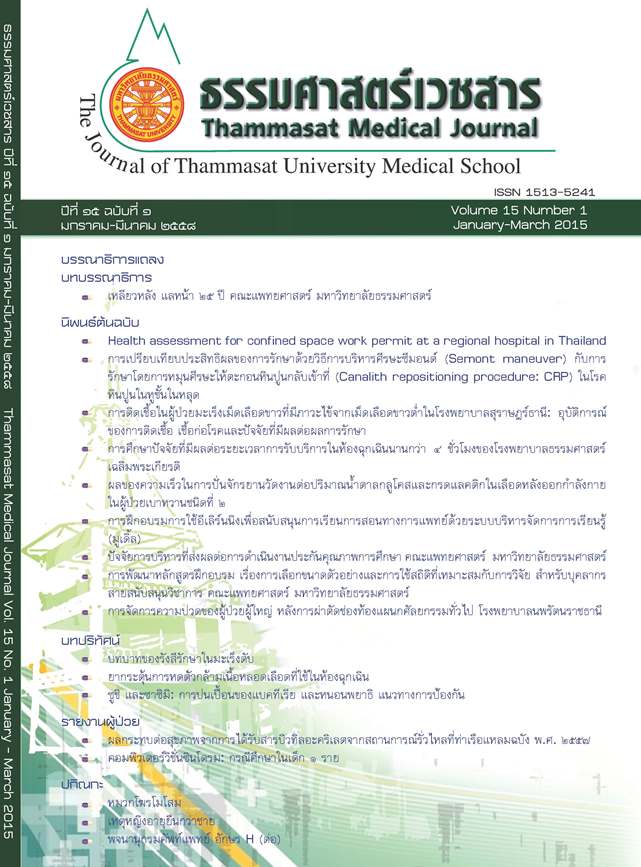Effects of pedaling speed on blood glucose and lactate after exercise in patients with type 2 diabetes mellitus
Keywords:
Pedaling speed, Type 2 diabetes mellitus, Blood glucose, Blood lactic acid, ความเร็วในการปั่นจักรยานวัดงาน, เบาหวานชนิดที่ 2, น้ำตาลในเลือด, กรดแลคติกในเลือดAbstract
Introduction: Exercise is one of a therapeutic intervention for blood glucose control in patients with type 2 diabetes mellitus (T2DM). However, hypoglycemia after exercise may be an adverse effect of exercise in such patients. Some studies showed the effect of lactic acid as carbohydrate source. The increase of blood lactate by blood infusion results in the reduction of blood glucose contribution as energy source after exercise. This study aimed to compare the changes in blood glucose and blood lactic acid after exercise between two pedaling speed in patients with T2DM.
Method: Thirty patients with T2DM were requested to perform either speed of bicycle ergometer-exercise; 1) 40 round per minute (rpm) or 2) 80 rpm for 20 minutes. The resistance during exercise was adjusted to yield the power output equal to 40 watts in both conditions. Blood glucose and blood lactic acid were measured 6 times; Percent maximum changes of blood glucose and blood lactic acid were calculated using the value that was greatest different from the baseline value. Percent maximum changes of blood glucose and blood lactic acid were compared between two pedaling speed using statistical analysis.
Result: Percent maximum changes of blood glucose between two speeds of 40 rpm and 80 rpm were not statistically significant different (-19.7 ± 2.8% and -21.6 ± 1.8% respectively; p = 0.6). Although, percent maximum changes of blood lactic acid after exercise at 80 rpm (241.28 ± 45.3%) tend to higher than that after 40 rpm-exercise (132.68 ± 22.1%), this could not reach the statistically significant difference (p > 0.05).
Discussion and Conclusion: The increase in blood lactic acid after exercise at 80 rpm did not exert effect on blood glucose spare after exercise in patients with T2DM. The unclear effect of blood lactic acid on blood glucose in this study might be from the insufficient duration of exercise.
Key words: Pedaling speed, Type 2 diabetes mellitus, Blood glucose, Blood lactic acid


